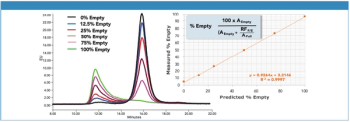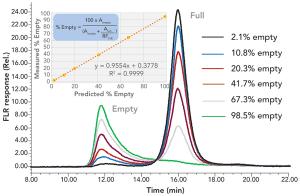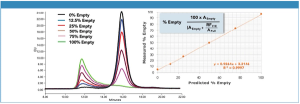
The state of protein-derived self-associated, aggregated, and fragmented impurities in therapeutics are critical quality attributes (CQAs) and are widely monitored using non-denaturing size-exclusion chromatography (SEC).

The state of protein-derived self-associated, aggregated, and fragmented impurities in therapeutics are critical quality attributes (CQAs) and are widely monitored using non-denaturing size-exclusion chromatography (SEC).

A look at the LC and LC–MS methods that are helping to overcome challenges in sample analysis, and how this can make adeno‑associated virus (AAV)–based gene therapy more accessible.

Recombinant adeno-associated viral therapy (rAAV) products are particularly complex. Are liquid chromatography and LC–MS the right tools for their characterization?

Monitoring the size heterogeneity of AAV-based gene therapy therapeutics is potentially important to ensure consistent product quality and efficacy. We demonstrate that the levels of both high-molecular weight (HMW) and low-molecular weight (LMW) impurities in AAV capsid preparations can be separated on a Waters 450 Å Protein BEH SEC column for a series of AAV serotypes.

The single-stranded DNA (ssDNA) content of AAV capsids in AAV-based gene therapy preparations impacts the efficacy of this treatment modality. We demonstrate that AAV8 capsids without and with full length ssDNA can be separated and their relative abundances determined on a Waters Protein-Pak Hi Res Q strong anion-exchange column.

Insulin was the first recombinant pharmaceutical produced. Currently, one of the critical quality control attributes of therapeutic insulin in the US and European Pharmacopoeia (USP and EP) monograph is the level of covalent high molecular weight (HMW) insulin as determined by HPLC size-exclusion chromatography.

Published: December 1st 2020 | Updated:

Published: December 1st 2020 | Updated:

Published: June 1st 2012 | Updated:

Published: June 1st 2020 | Updated:

Published: June 1st 2020 | Updated: